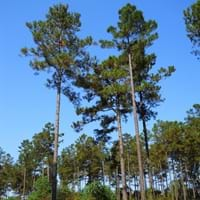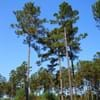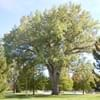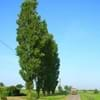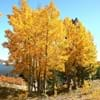Life Span
Perennial
Annual
Origin
Southeastern United States
South Africa
Types
it is a variety of pine
Shasta Daisy
Gloriosa Daisies
Painted Daisy
Pyrethrum Daisies
Number of Varieties
Not Available
Habitat
Fields
gardens, Grassland
USDA Hardiness Zone
6-9
10-11
Sunset Zone
H1
8, 9, 12, 13, 14, 15, 16, 17, 18, 19, 20, 21, 22, 23, 24
Habit
Upright/Erect
Clump-Forming
Flower Color
Not Available
White, Yellow, Blue, Purple, Orange, Pink, Magenta
Flower Color Modifier
Bicolor
Bicolor
Fruit Color
Brown
Not Available
Leaf Color in Spring
Green
Green, Blue Green
Leaf Color in Summer
Green
Green, Blue Green
Leaf Color in Fall
Green
Green, Blue Green
Leaf Color in Winter
Green
Light Green
Leaf Shape
Needle like
Arrowhead
Plant Season
Spring, Summer, Fall, Winter
Spring, Summer, Fall
Sunlight
Full Sun, Partial Sun
Full Sun
Growth Rate
Very Fast
Fast
Type of Soil
Clay, Loam, Sand
Loam
The pH of Soil
Acidic, Neutral
Neutral
Soil Drainage
Well drained
Well drained
Bloom Time
Not Available
Late Spring, Early Summer, Summer, Late Summer, Early Fall, Fall
Tolerances
Drought
Drought
Where to Plant?
Ground
Ground, Pot
How to Plant?
Seedlings, Transplanting
Seedlings, Stem Planting
Plant Maintenance
Medium
Medium
Watering Requirements
Do not let dry out between waterings, Requires a lot of watering
Allow soil to be completely dry in between waterings, It cannot sustain wet-feet, Keep the ground moist but not water-logged, Water in morning to avoid prompting diseases, Water twice a day in the initial period
In Summer
Lots of watering
Lots of watering
In Spring
Ample Water
Moderate
In Winter
Lots of watering
Average Water
Soil pH
Acidic, Neutral
Neutral
Soil Type
Clay, Loam, Sand
Loam
Soil Drainage Capacity
Well drained
Well drained
Sun Exposure
Full Sun, Partial Sun
Full Sun
Pruning
Prune to stimulate growth
Cut or pinch the stems, Prune regularly, Remove deadheads
Fertilizers
All-Purpose Liquid Fertilizer, Apply 10-10-10 amount, High-phosphorous fertilizers used, organic fertlizers
All-Purpose Liquid Fertilizer
Pests and Diseases
Bark beetles, Beetles, Black root rot, Root rot
Red blotch
Plant Tolerance
Drought
Drought
Flower Petal Number
Not Available
Single
Fragrant Bark/Stem
Yes
No
Foliage Texture
Fine
Medium
Foliage Sheen
Matte
Not Available
Attracts
Birds
Bees, Butterflies
Allergy
Asthma, Skin rash
Not Available
Aesthetic Uses
Showy Purposes
Beautification, Bouquets, Showy Purposes
Beauty Benefits
Not Available
Not Available
Environmental Uses
Air purification
Air purification
Medicinal Uses
No Medicinal Use
Cold, Cough, Stomach pain
Part of Plant Used
Stem
Flowers
Other Uses
used for making roof trusses, poles, joists, piles, Wood is used for making furniture
Showy Purposes, Used as Ornamental plant
Used As Indoor Plant
No
Yes
Used As Outdoor Plant
Yes
Yes
Garden Design
Shade Trees, Street Trees
Bedding Plant, Container, Cutflower, Foundation, Groundcover, Hanging Basket, Mixed Border, Rock Garden, Wall
Botanical Name
PINUS taeda
OSTEOSPERMUM
Common Name
Loblolly Pine
African daisy or Blue-eyed Daisy
In Hindi
loblolly pine
अफ्रीकी डेज़ी
In German
Weihrauchkiefer
African Daisy
In French
pin à encens
marguerite africaine
In Spanish
pino taeda
margarita africana
In Greek
loblolly πεύκο
Αφρικανική μαργαρίτα
In Portuguese
Pinus taeda
africano margarida
In Polish
Loblolly sosna
Gerbery
In Latin
pinea taeda
African primula
Phylum
Coniferophyta
Anthophyta
Class
Pinopsida
Magnoliopsida
Family
Pinaceae
Asteraceae
Clade
Not Available
Angiosperms, Asterids, Eudicots
Tribe
Not Available
Calenduleae
Subfamily
Not Available
Asteroideae
Number of Species
Not Available
Not Available
Difference Between Loblolly Pine and African Daisy
If you are confused whether Loblolly Pine or African Daisy are same, here are some features about those plants to help you choose better. Many people think that these two plants have the same characteristics, but one can see Loblolly Pine and African Daisy Information and learn more about it. Fertilizers required for proper growth of Loblolly Pine are All-Purpose Liquid Fertilizer, Apply 10-10-10 amount, High-phosphorous fertilizers used and organic fertlizers, whereas for African Daisy fertilizers required are All-Purpose Liquid Fertilizer. Hence, one should know the basic difference between Loblolly Pine and African Daisy if you are planning to have them in your garden to enhance its beauty.
<
Flowering PlantsImportance of Loblolly Pine and African Daisy
Want to have the most appropriate plant for your garden? You might want to know the importance of Loblolly Pine and African Daisy. Basically, these two plants vary in many aspects. Compare Loblolly Pine and African Daisy as they differ in many characteristics such as their life, care, benefits, facts, etc. Every gardener must at least have the slightest clue about the plants he wants to plant in his garden. Compare their benefits, which differ in many ways like facts and uses. The medicinal use of Loblolly Pine is No Medicinal Use whereas of African Daisy is Cold, Cough and Stomach pain. Loblolly Pine has beauty benefits as follows: Not Available while African Daisy has beauty benefits as follows: Not Available.
Compare Facts of Loblolly Pine vs African Daisy
How to choose the best garden plant for your garden depending upon its facts? Here garden plant comparison will help you to solve this query. Compare the facts of Loblolly Pine vs African Daisy and know which one to choose. As garden plants have benefits and other uses, allergy is also a major drawback of plants for some people. Allergic reactions of Loblolly Pine are Asthma and Skin rash whereas of African Daisy have Not Available respectively. Having a fruit bearing plant in your garden can be a plus point of your garden. Loblolly Pine has showy fruits and African Daisy has no showy fruits. Also Loblolly Pine is not flowering and African Daisy is flowering. You can compare Loblolly Pine and African Daisy facts and facts of other plants too.
